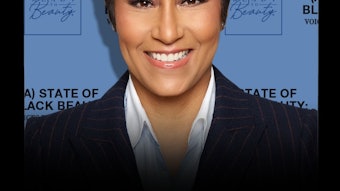Within the world of retail, point-of-purchase advertising is second only to a well-trained sales staff in promoting and moving products. POP displays are vibrant communicators of a brand’s story and values to consumers, while clearing the way for a brand to stand out from competition occupying the surrounding shelf space.
According to the Point-of-Purchase Advertising Institute, 67% of purchase decisions are made in store, thus making it critical that brands give consumers as much product information as possible on the shelf. Paragraphs of text won’t do the trick; instead, brands face the challenge of engaging the consumer while providing necessary product information within a two-second span, the estimated time a consumer gives to a product.
In addition to the year-round concern about engaging and educating consumers, holiday seasons are a battle of sales margins, with retailers increasing engagement tactics as early as Labor Day. “It’s hard to agree that such early positioning will have any lasting effects when the majority of the general public starts to shop two weeks before the holiday,” said Bob Duerr of BlueWater Communications, Inc., a New Jersey based marketing and advertising agency. As a result, the latest developments in POP marketing attempt to both engage and educate consumers as they enter the retail environment to encourage repeat purchases.
Global Influences, Retail Impact
Within the retail marketplace, influences on consumer spending can vary depending on larger economic trends—including the housing market, labor expenses and increases in energy costs. As financial markets tighten, brands focus on rebranding and relaunching their products to increase sales, while also cutting marketing costs to initiate savings. “Innovation, planning and timely execution of POP marketing initiatives can keep things fresh,” said Duerr. “Recent rises in gas, shipping and labor prices have created a market for simplistic stands and pop-up displays that offer easy design and setup.”
Multi-message Branding (MMB) and other interactive POP displays are part of another growing trend that reflects larger economic concerns. These methods allow brands to change messaging or campaigns without additional investments in materials. “Outside of vertical marketing strategies, these techniques have the effect of multistage advertising fireworks with branded visuals intertwined with catchy remixed tunes, as in the case of Target’s recent media barrage,” said Duerr. “On smaller scales, MMB can be employed by changing POP store to store or billboard to billboard, and throughout the media channels.”
Displays are also being customized for specific retailers, possible through advances in digital printing on a wide array of substrates. This also makes short and medium runs cost-effective. “The days of the one size fits all display is dwindling,” said Jim Hauser of Imperial Graphics, Inc., a company that builds displays for POP.
In addition to MMB and complementary to interactive POP, brands can take advantage of cell phone technology to engage consumers and draw them into the retail arena. Smile Reminder, for example, is a program that sends reminders of appointments directly to an email account or cell phone via text message. The technology allows spas, for example, to send out personalized e-newsletters, birthday or holiday greetings, and surveys. This program can also be used to remind consumers to reorder products or invite them to in-store marketing events.
While these efforts may drive consumers into the retail environment, it is the engagement within the bounds of the brick-and-mortar surroundings that drive sales.
Engaging the Consumer
In the age of the Internet and technological advances that have turned cell phones into Web browsers and music players—while also enabling the ability to bypass traditional advertising—marketers have found that traditional 15- and 30-second spots playing on a monitor in the retail arena no longer grab the consumer’s attention. Retail is moving from talking at the consumer to interacting with them, driving both sales and education.
“Truly, the significant advances taking place in the marketplace, especially in retail, fall under the most popular heading: engagement,” said Tony Rizzaro, CEO and founder, Studio IMC, a company that provides interactive multimedia to POP. “It wasn’t long ago that interactive had it’s day, but now the focus is on engagement as the new buzzword.”
Brands are tackling this challenge with technology that engages the consumer through advanced media players. Said Rizzaro, “Most of the tools primarily take rise from what we call advanced media players capable of much more than just running playlists of 15- or 30-second spots or canned content. These new players, [such as] the IMCtv box, can run those standards, but also allow for multiple modes of interaction—such as cell phone tie-in, content downloads and interaction [in] real-time with the viewers using motion and sound.”
These systems give the consumer control of the imagery and content on the screen. The engaged consumer becomes part of the brand experience for a few precious seconds, while the brand provides education and influence that may generate a sale.
An IRpod Gesture Interface with an Immersive Display permits consumers to use cell phones to paint with light, send MMS picture messages and SMS text messages, and scroll through text on-screen. Consumers may also use gestures and loud noises to create ripples on the screen. Another tool is the Magic Mirror, which allows consumers to interact within a marketing image created by the brand while tracking crucial data about the consumer’s interests.
On-screen voting, smart shopping tools and digital assistants have brought the Internet into the brick-and-mortar retail environment, giving the consumer access to additional information, surveys and content. These media also act as a sales agent for the brand, complementing the human element provided by sales personnel. Interactive media are not limited to walls or eye level, but can be built on the floor, providing a visually interesting focus for consumers walking through a retail environment.
“Many retailers are looking to outfit the gondola or end of aisle with power and Internet access like never before,” said Rizzaro. “With the increasing amount of display technologies and the significant ROI that goes along with it, many are either outfitting future installs or retrofitting existing shelving with these two features.”
Cooperation and communication between brands and retailers has led to design displays that are in step with the retailer’s overall store design. “Eye-catching special effects, such as lenticular images and holographic images, make displays more appealing to consumers and, therefore, are more effective,” said Imperial Graphics’ Hauser.
Impression and connection measurement devices measure the effectiveness of these efforts. A system called FacePlate, for example, uses gaze-tracking software to measure actual impressions on digital displays. “Without a doubt, the trend is to utilize these new technologies for in-store marketing, within those last few feet connecting to the consumer. These technologies maximize the shopping experience through engagement, interaction and measurement,” said Rizzaro.
In-store marketing, as a result, is outpacing Internet advertising in overall growth, doubling since 2004 and expected to have an annual growth rate of 21% through 2010, according to Deloitte & Touche USA LLP.
Capitalizing on Engagement
Highly evident in the holiday season, gifts with purchase increase brand loyalty and complement in-store engagement efforts.
“In order for customers to be able to experience other products that our skin care specialists might believe complement the individual [regimen], it is necessary for the customer to be able to try [the product as a gift] and confirm the trust that she has begun to place in our skin care specialist,” said Jason Smith, vice president of brand management, RéVive, a skin care company. “This gift with purchase underlines that trust and enables our customers to return with further purchase requests.”
Brands utilize the gift with purchase to direct the consumer’s attention to a new product while increasing overall brand loyalty, but they are also taking advantage of the consumer’s need to feel that they got a good deal—also reinforced in rebate marketing.
“There has been a rise in rebate marketing. The offer of savings on name brands has been effective, even when it is a multipart project to mail in a rebate form,” said Duerr. “The incorporation of on-pack marketing on consumer goods and beauty items has been in effect for some time, and has had considerable effect on overall sales.”
Engaging with the consumer is not easy. Brands are competing for attention with thousands of other product messages; therefore, the displays and mediums used at POP create a distinction that is critical for brands.
“In comparison to other forms of media, [POP marketing] is very cost-effective and has a high impact, due to its ability to influence purchasing decisions where its counts,” said Hauser.
In order to grab hold of the consumer’s attention—thus creating a sales opportunity—brands must take advantage of technology that engages and educates the consumer, both at the retail level and beyond.










